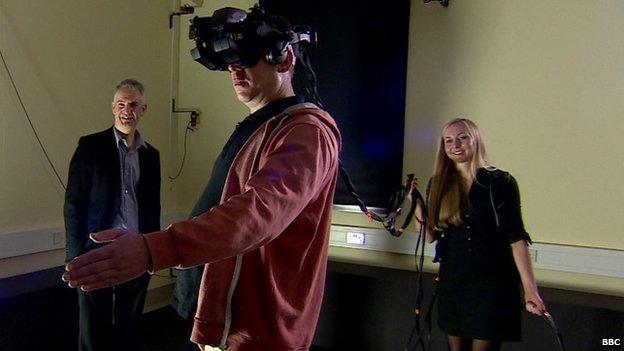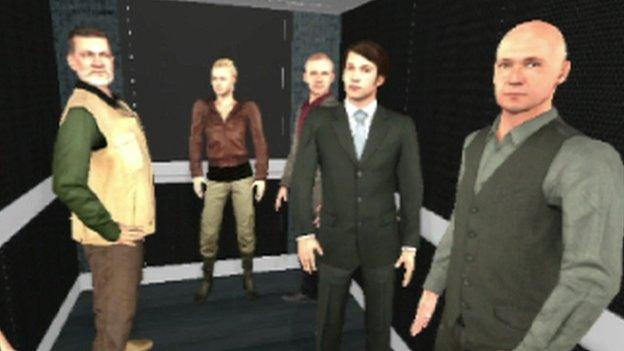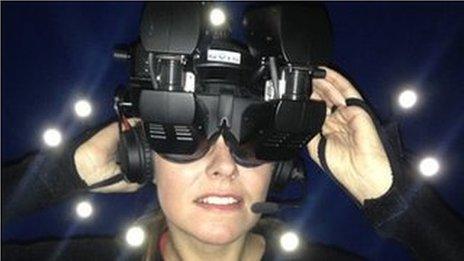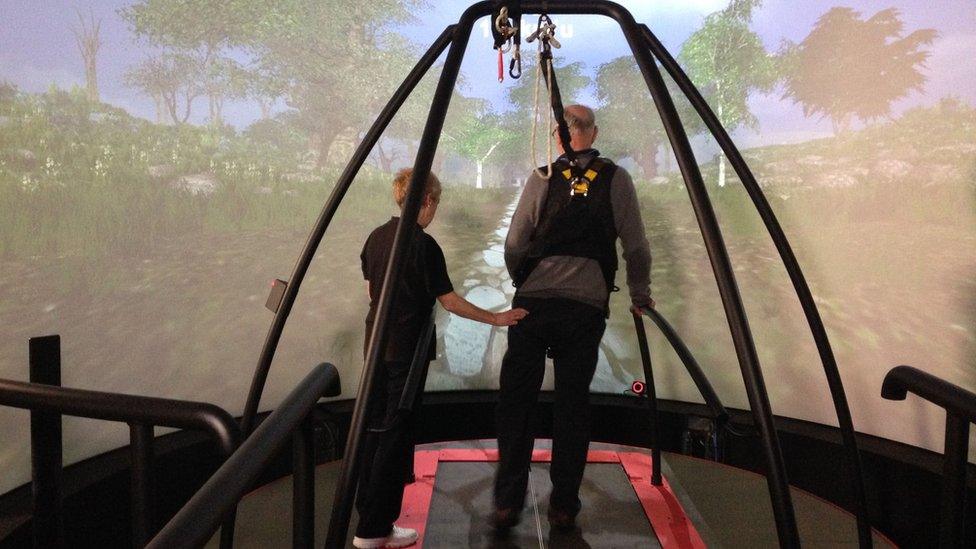Paranoia 'reduced with virtual reality'
- Published
Paranoia treated by using virtual reality video
Virtual reality has been used to help treat severe paranoia.
Patients who suffered persecutory delusions were encouraged to step into a computer-generated Underground train carriage and a lift.
The simulations allowed the study's 30 patients to learn social situations they feared were actually safe.
The research at Oxford University, published in the British Journal of Psychiatry,, external was funded by the Medical Research Council. , external
Members of one group of patients were told to use their normal defensive behaviour, such as avoiding eye contact.
The rest of the patients were encouraged to lower their defences and try to learn they were safe by approaching computer characters (avatars) and standing toe-to-toe or staring at them.
'Paranoia melts away'
This group, who fully tested out their fears, showed the biggest reduction in their paranoid delusions. More than half of them no longer had severe paranoia at the end of the testing day.
The first group, who used their defences, also saw some reduction in the level of severe paranoia.
The study was led by Prof Daniel Freeman, a clinical psychologist at Oxford University's Department of Psychiatry., external He told me: "At the heart of paranoia is the unfounded belief that people are under threat.
"With virtual reality we can help the person to re-learn that they are safe, and when they do that, the paranoia melts away."

Toby experiences the VR with the help of researchers at Oxford University
The Oxford team estimate that around 1-2% of the population have severe paranoia at some point in their lives, typically associated with a mental health disorder such as schizophrenia.
Patients have such a strong sense of mistrust that they avoid contact with people and may rarely leave home.
The study was small and the patients had just one half-hour session of virtual reality with no long-term follow-up. However, Prof Freeman said the results were "exceptionally good".
He added: "I think this a glimpse into the future of mental healthcare. There is a revolution underway in virtual reality with many headsets becoming available.
"As these become more affordable we will see them used not just in clinical settings, but in people's homes."

Patients were encouraged to get into this virtual lift
Toby Brabham, aged 45, was diagnosed with schizophrenia more than 20 years ago, and has experienced severe paranoia.
He told me: "I used to experience persecutory voices - they would be having a go at me.
I would avoid going out and when I did it was with my head down so I avoided eye contact. It was very isolating."
Toby is now being successfully treated, and agreed to test out the virtual reality system for the BBC.
'Exciting to see'
Afterwards he said: "If I go on a Tube train or lift now I will certainly remember the virtual reality experience and I think it will be helpful in reducing any feelings of anxiety that I may have."
Dr Kathryn Adcock, head of neurosciences and mental health at the Medical Research Council, said: "Virtual reality is proving extremely effective in the assessment and treatment of mental health problems.
"This study shows the potential of its application to a major psychiatric problem."
Brian Dow, at the charity Rethink Mental Illness, said: "It's exciting to see cutting-edge technology used innovatively to treat what can be an extremely frightening and disruptive symptom for some people experiencing mental illness. "
- Published15 February 2016

- Published12 February 2016

- Published7 April 2016
